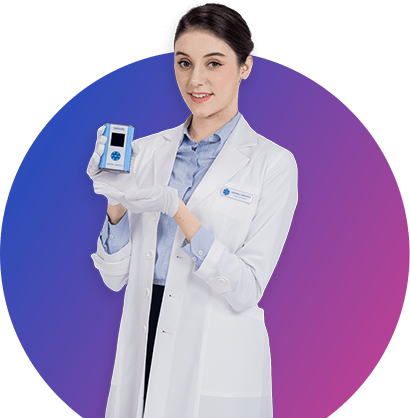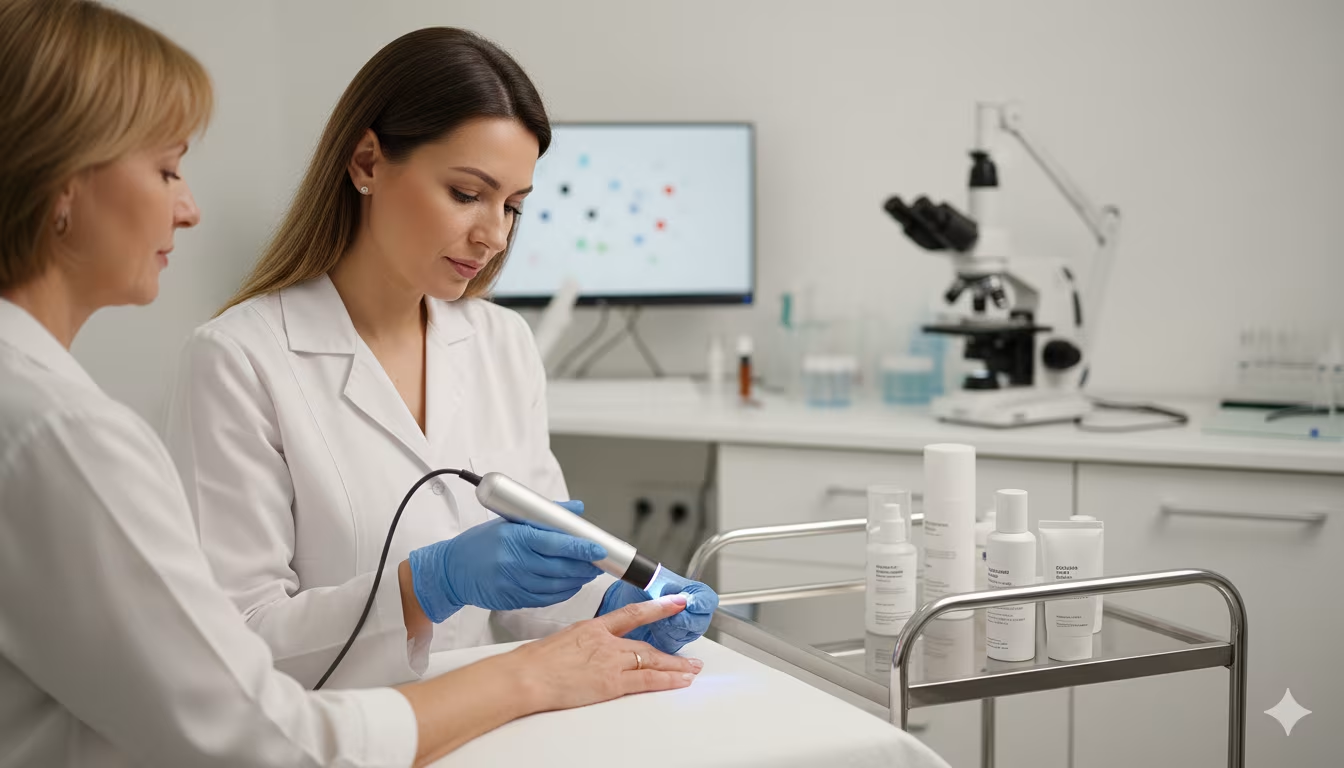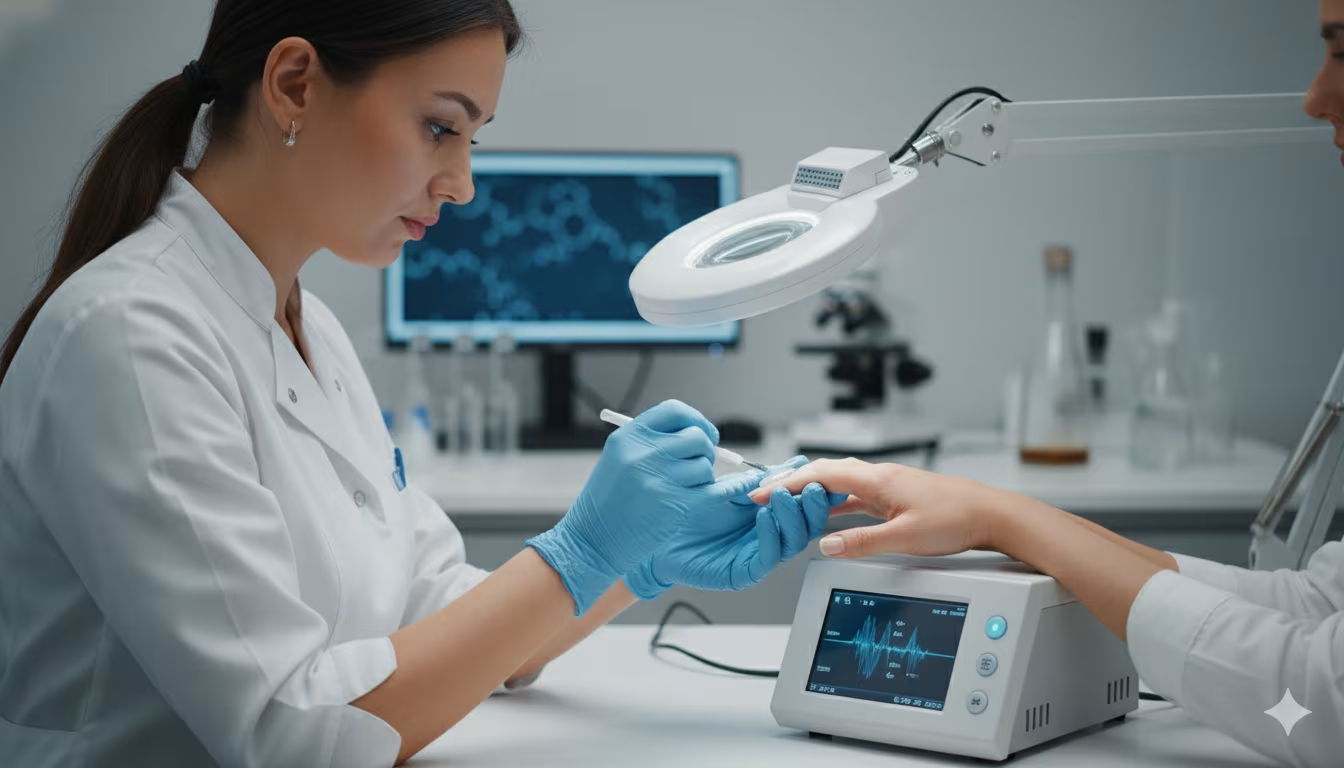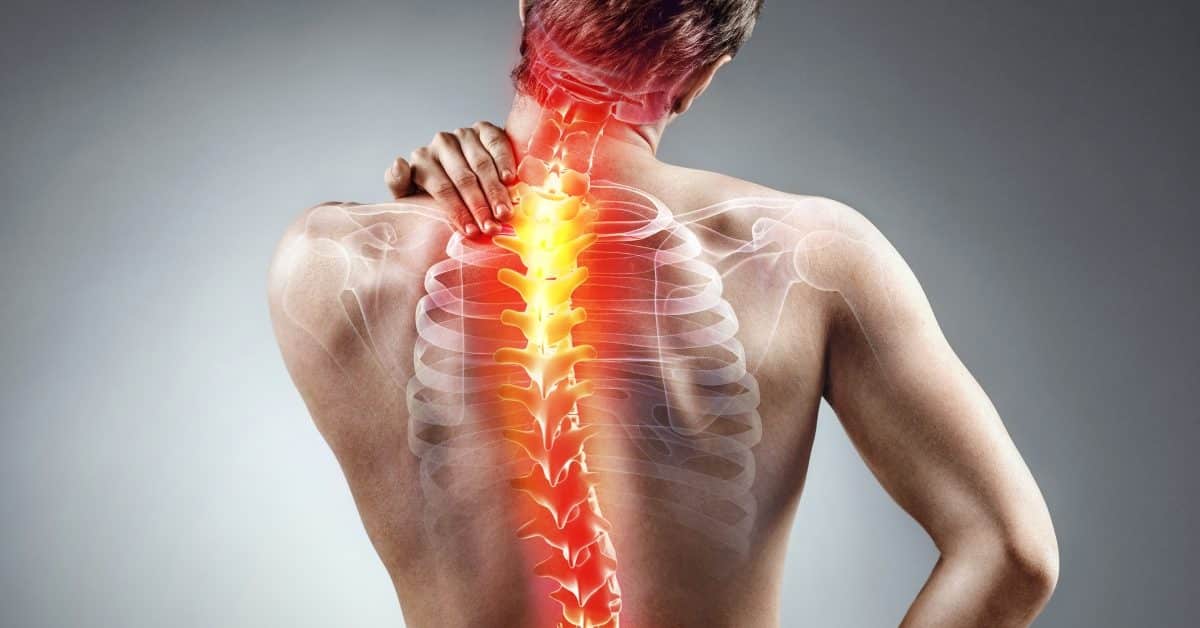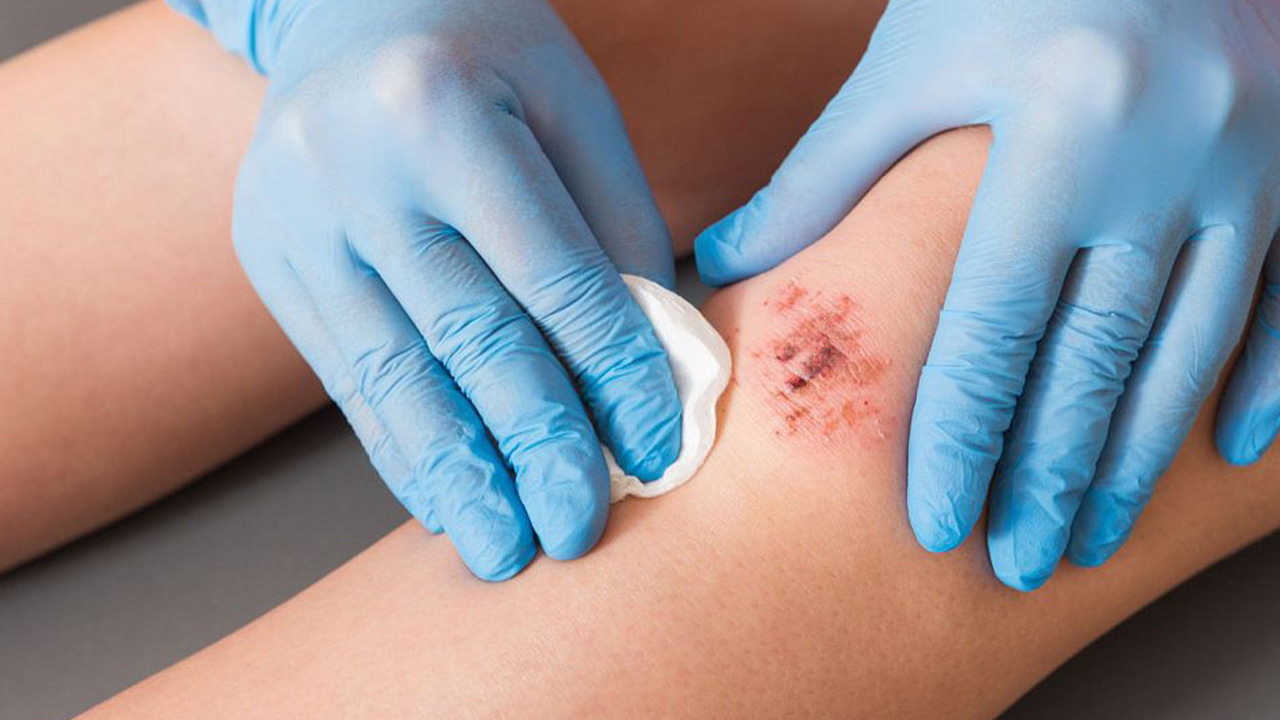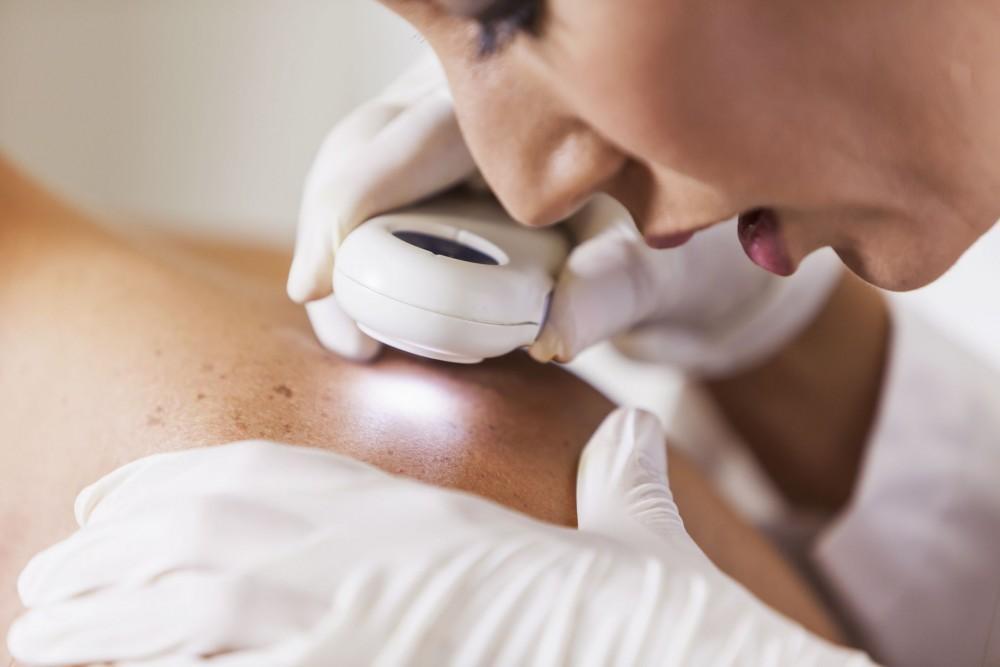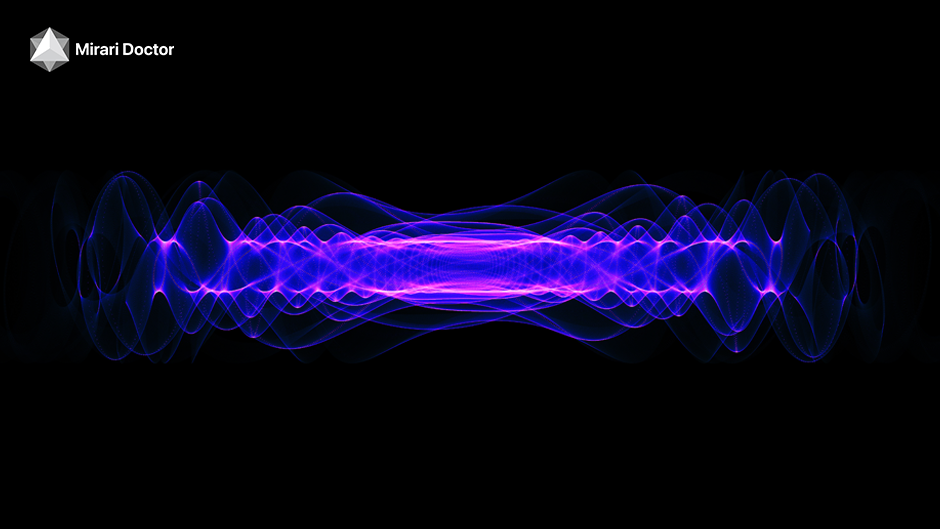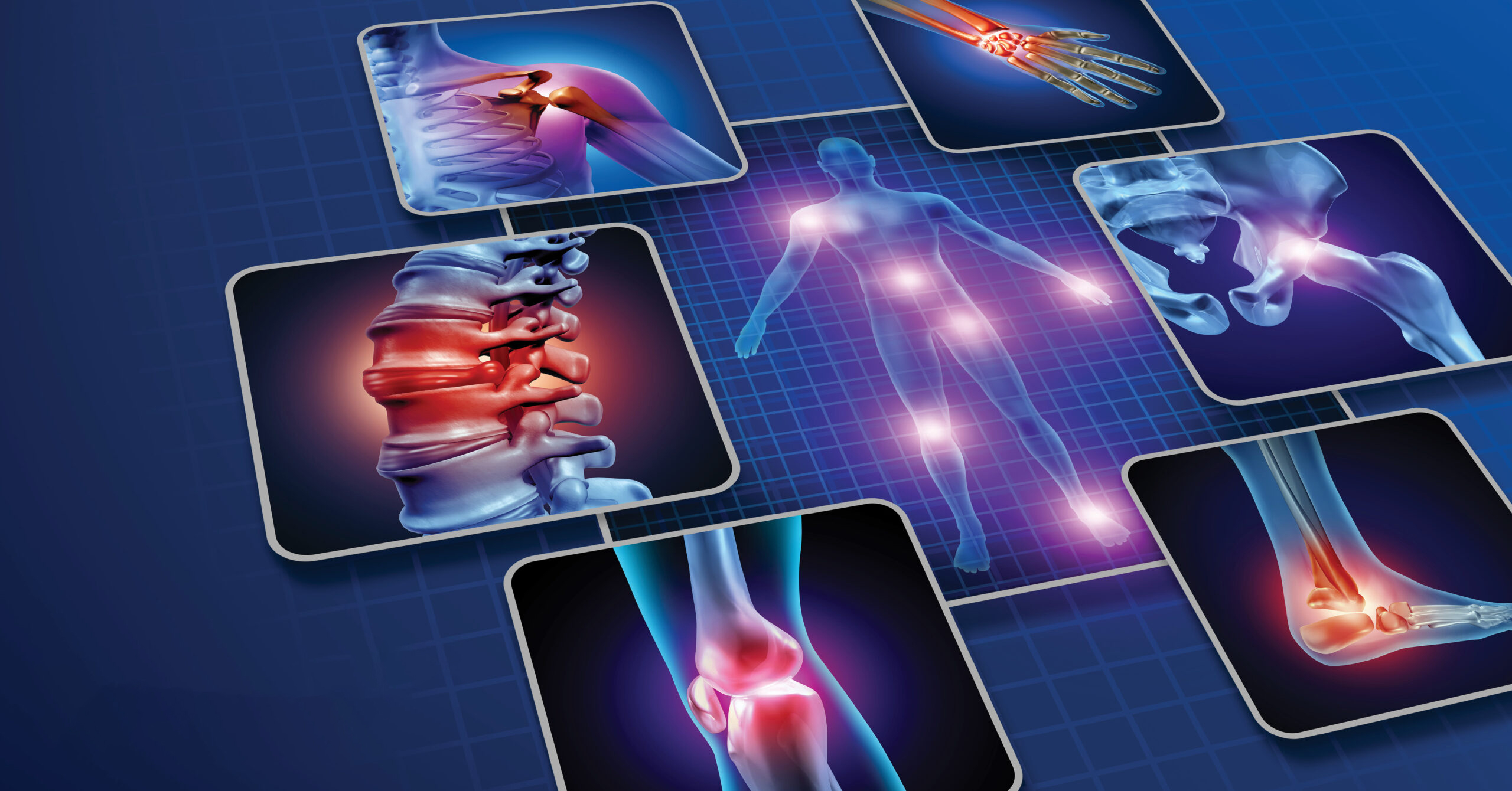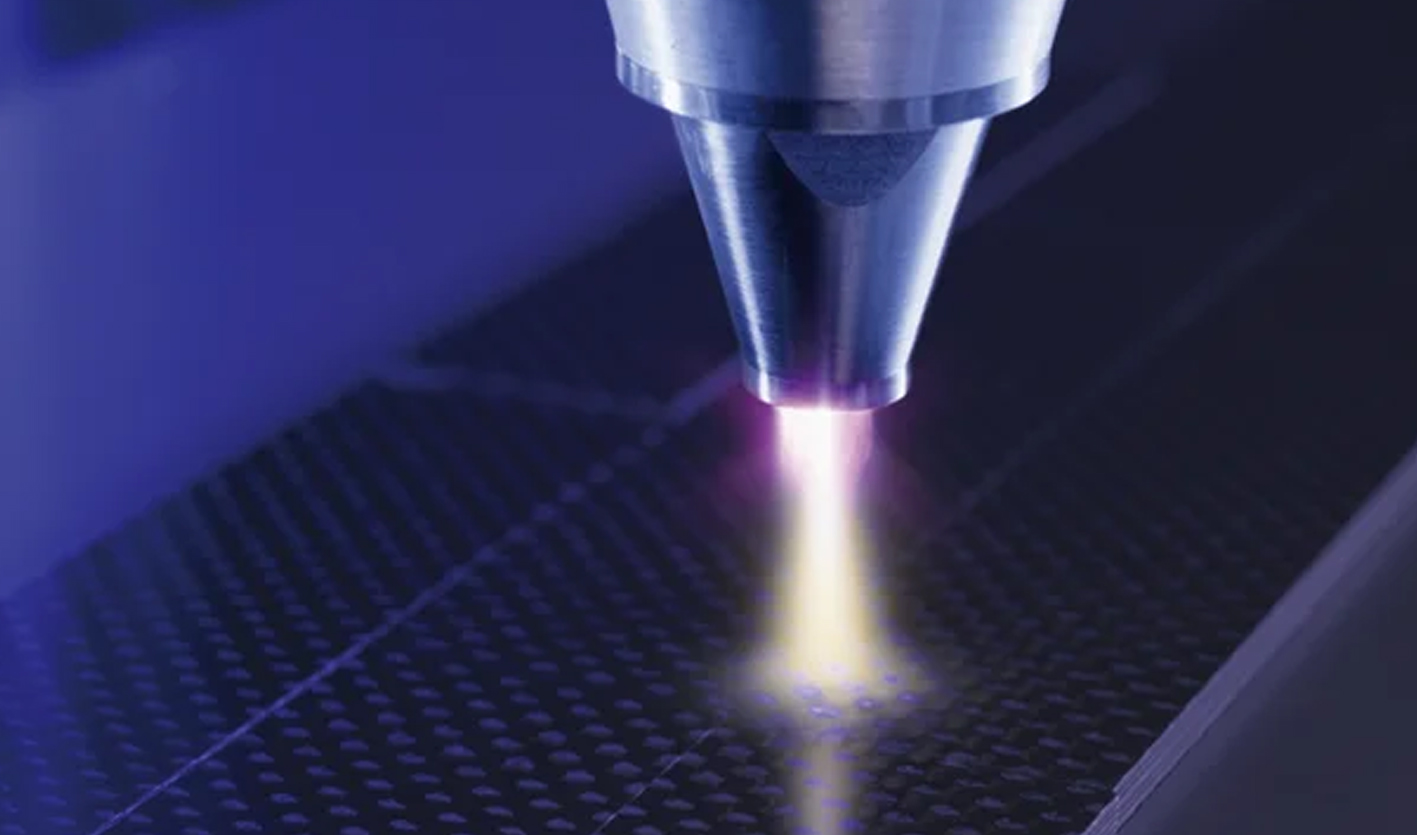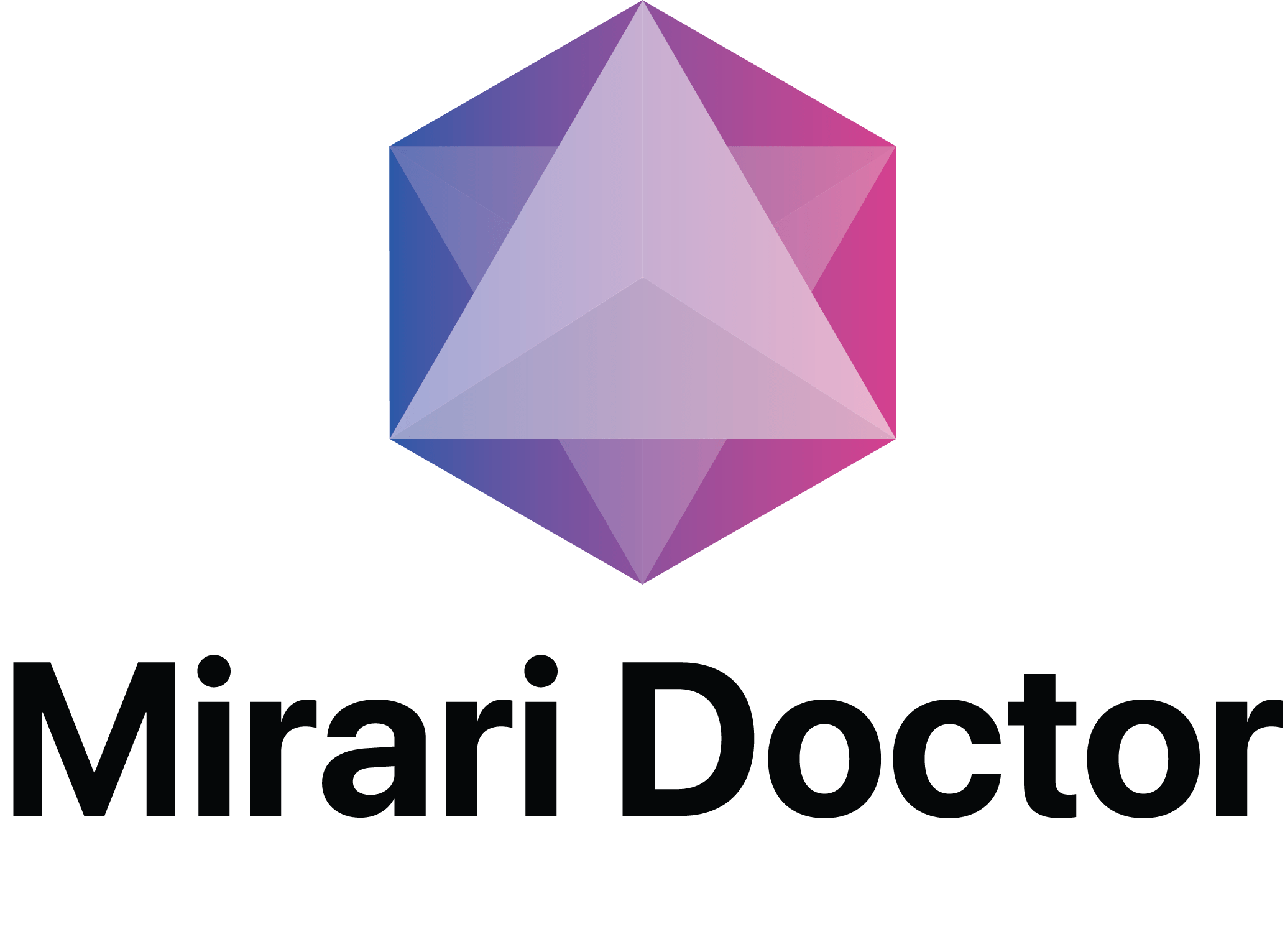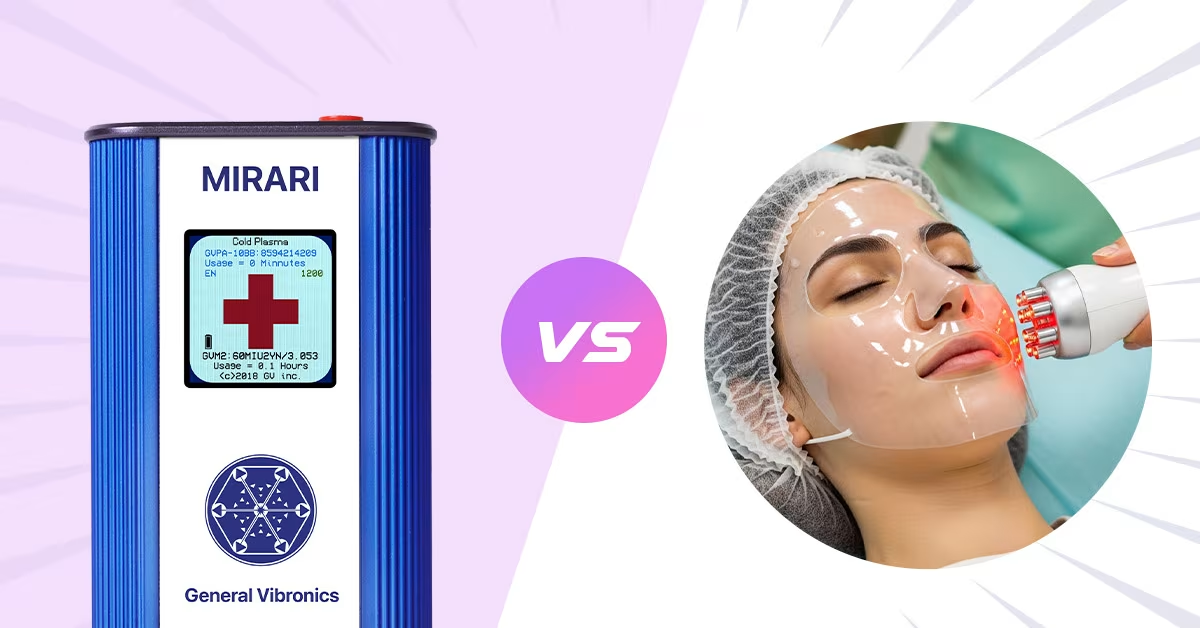
When comparing cold plasma therapy and radiofrequency (RF) treatment, patients and healthcare providers face an important decision between two revolutionary non-invasive medical technologies. Cold plasma therapy utilizes ionized gas at room temperature to deliver therapeutic benefits, while RF treatments use controlled heat energy to stimulate tissue healing and regeneration. Understanding the basic differences between these approaches is crucial for optimal treatment selection.
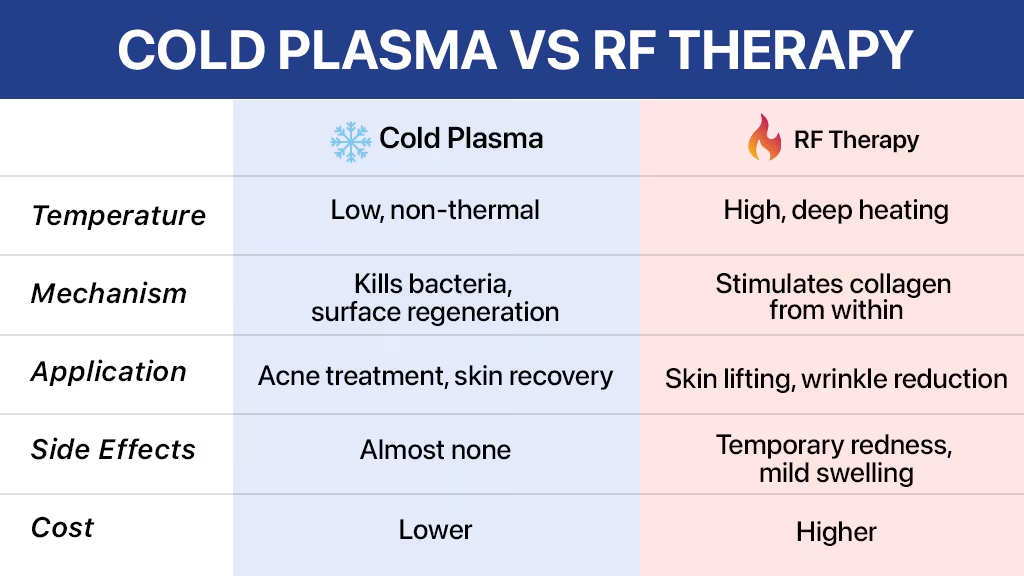
Both technologies have demonstrated significant clinical efficacy across multiple medical applications, yet they operate through distinct mechanisms and offer unique advantages for specific conditions. This comprehensive comparison examines the scientific foundations, clinical applications, safety profiles, and practical considerations that distinguish cold plasma therapy from radiofrequency treatment.
What is cold plasma therapy?
Cold atmospheric plasma (CAP) represents a state-of-the-art medical technology that generates ionized gas particles at room temperature, creating reactive oxygen species (ROS) and reactive nitrogen species (RNS) that provide therapeutic effects without thermal damage to healthy tissues[1]. Unlike traditional thermal therapies, cold plasma maintains temperatures between 20 and 40°C, ensuring patient comfort while delivering potent biological effects.
The technology operates through dielectric barrier discharge or atmospheric pressure plasma jets, creating controlled ionization of environmental gases such as argon, helium, or ambient air[2]. This process generates multiple therapeutic components, including ozone, nitric oxide, and various reactive species that interact directly with cellular structures to promote healing.
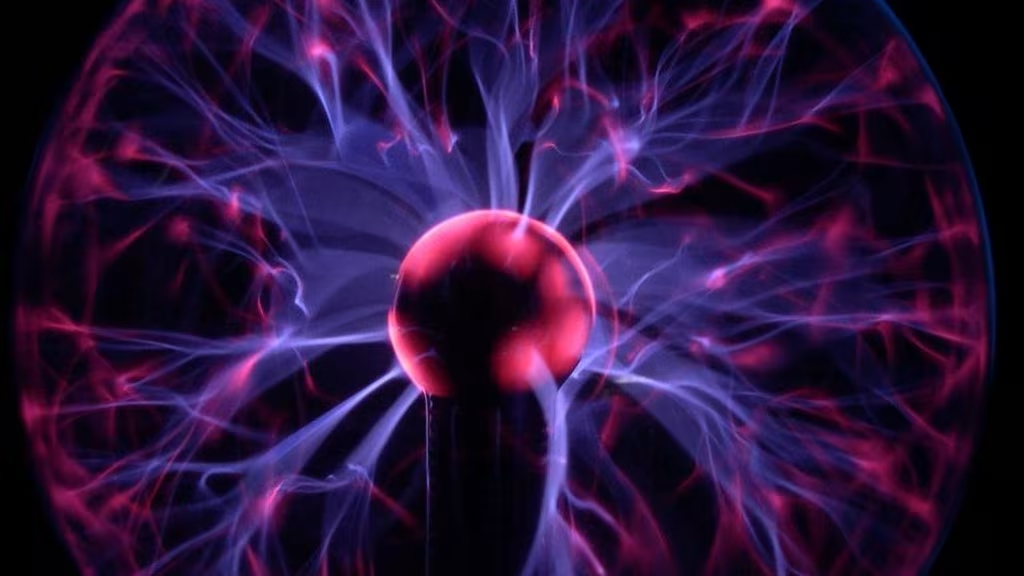
Key Mechanisms of Cold Plasma Action
Cold plasma therapy achieves therapeutic outcomes through several distinct mechanisms:
- Antimicrobial action: Direct inactivation of bacteria, viruses, and fungi, including antibiotic-resistant strains
- Cellular stimulation: Enhanced cell proliferation and migration for accelerated tissue repair
- Nitric oxide production: Improved blood circulation and immune system modulation
- Reactive species generation: Controlled oxidative stress that promotes beneficial cellular responses
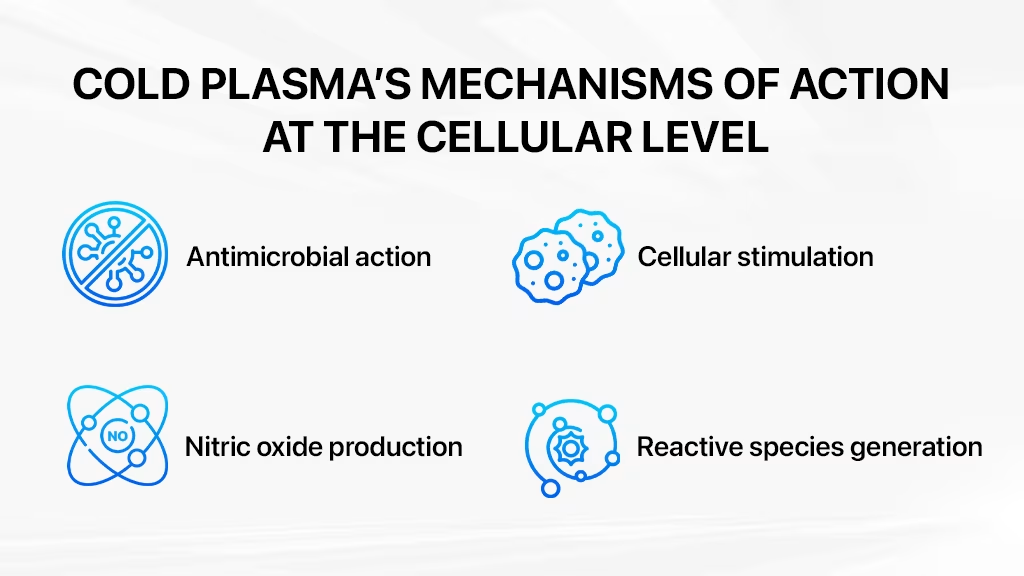
Understanding Radiofrequency Therapy
Radiofrequency therapy employs controlled electromagnetic energy to generate therapeutic heat within targeted tissues, typically operating between 300 kHz and 10 MHz frequencies[3]. The technology works by creating oscillating electric fields that cause molecular vibration, resulting in controlled thermal heating that stimulates collagen production and tissue remodeling.
RF treatments achieve temperatures ranging from 40 to 45°C in targeted tissues, triggering heat shock proteins and promoting collagen synthesis while avoiding damage to surrounding structures[4]. The controlled heating effect makes RF therapy particularly effective for conditions requiring deep tissue penetration and thermal stimulation.
RF Therapy Operating Principles
Radiofrequency systems deliver energy through either monopolar or bipolar configurations:
- Monopolar RF: Uses a single electrode with deeper penetration, effective for larger treatment areas
- Bipolar RF: Employs paired electrodes for more superficial, controlled heating
- Heat generation: Molecular vibration creates therapeutic temperatures in target tissues
- Collagen stimulation: Thermal energy promotes new collagen formation and tissue tightening
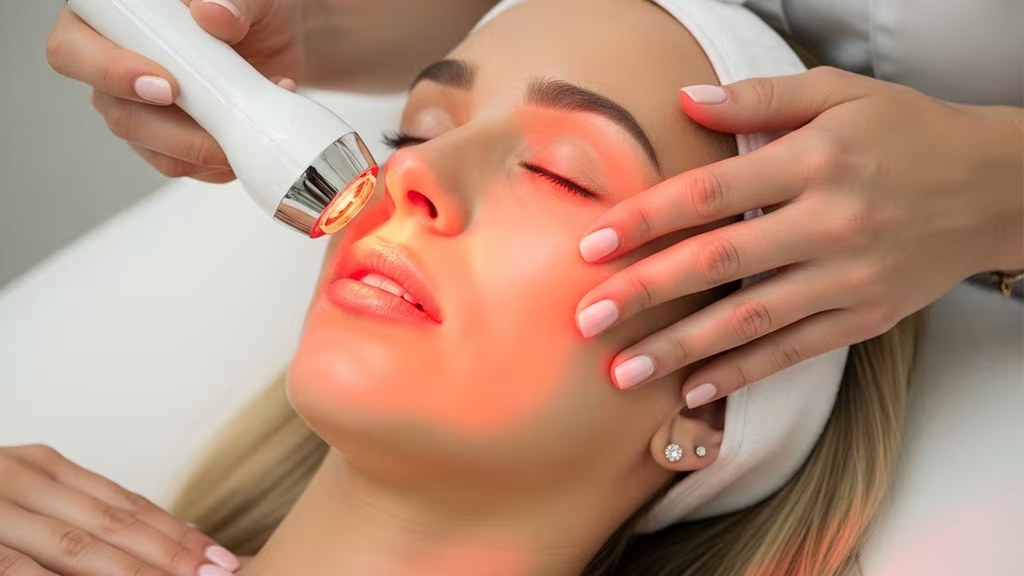
Technical Specifications Comparison
| Parameter | Cold Plasma Therapy | Radiofrequency Therapy |
|---|---|---|
| Operating Temperature | 20-40°C (room temperature) | 40-45°C (controlled heating) |
| Energy Type | Ionized gas particles | Electromagnetic waves |
| Frequency Range | 13.56 MHz typical | 300 kHz – 10 MHz |
| Power Output | 2-5 watts | 10-200 watts |
| Treatment Duration | 5-15 minutes | 20-45 minutes |
| Tissue Penetration | Superficial to mid-dermal | Deep tissue penetration |
| Contact Method | Non-contact or minimal | Direct skin contact required |
Clinical Applications and Effectiveness
Cold Plasma Therapeutic Uses
Cold plasma therapy has demonstrated exceptional efficacy in multiple clinical applications, particularly for conditions requiring antimicrobial action and cellular regeneration[5]:
Wound Healing Applications:
- Diabetic foot ulcers with significant surface area reduction
- Chronic non-healing wounds showing accelerated closure rates
- Post-surgical wound care with reduced infection rates
- Burns and traumatic injuries with enhanced tissue regeneration
Dermatological Conditions:
- Acne treatment with 70-80% improvement rates through bacterial elimination
- Inflammatory skin conditions with reduced redness and irritation
- Fungal infections with direct pathogen inactivation
- Eczema and psoriasis with controlled inflammatory responses
A randomized controlled trial of 43 patients with diabetic foot ulcers showed that cold plasma treatment resulted in significantly greater wound surface area reduction compared to standard care alone after just two weeks of treatment[6].
Radiofrequency Treatment Applications
RF therapy excels in applications requiring deep tissue heating and collagen stimulation[7]:
Cosmetic and Aesthetic Uses:
- Skin tightening and wrinkle reduction with lasting results up to 12 months
- Cellulite reduction through improved circulation and tissue remodeling
- Body contouring with gradual fat cell disruption
- Facial rejuvenation with enhanced skin texture and firmness
Medical Applications:
- Chronic pain management through controlled tissue heating
- Joint mobility improvement in arthritic conditions
- Muscle relaxation and spasm reduction
- Deep tissue therapy for sports injuries
Clinical studies demonstrate that RF treatments provide gradual improvements over 3-6 weeks with results lasting 6-12 months, requiring maintenance sessions for sustained benefits[8].
Safety Profiles and Risk Assessment

Cold Plasma Safety Considerations
Cold plasma therapy maintains an excellent safety profile due to its non-thermal nature and precise control mechanisms[9]:
Minimal Side Effects:
- Temporary mild skin redness lasting 1-2 hours
- Occasional tingling sensation during treatment
- Rare instances of skin sensitivity resolving within 24 hours
- No reported serious adverse events in clinical trials
Safety Advantages:
- No thermal damage to healthy tissues
- Suitable for sensitive skin types and compromised healing conditions
- No anaesthetic requirements
- Immediate return to normal activities
Radiofrequency Safety Profile
RF treatments require careful protocol adherence to maintain safety standards[10]:
Common Side Effects:
- Mild to moderate redness lasting 1-3 days
- Temporary swelling and tenderness
- Possible hyperpigmentation in darker skin types
- Rare instances of thermal burns with improper technique
Safety Protocols:
- Continuous applicator movement required during treatment
- Temperature monitoring to prevent overheating
- Contraindicated in patients with metal implants or pacemakers
- Professional training essential for safe operation
The American Board of Cosmetic Surgery reports that RF treatments demonstrate an excellent safety profile when performed correctly, with serious complications occurring in less than 0.1% of cases[11].
Advanced Device Innovation: Mirari Cold Plasma System
One of the pioneering medical devices applying cold plasma therapy is the Mirari Cold Plasma System, developed by General Vibronics and brought to market by Mirari Doctor[12]. This innovative device received FDA clearance in November 2024, which was an important turning point in its validation for medical use.
The Mirari system represents a breakthrough in cold plasma technology, utilizing nitric oxide-based plasma generation instead of traditional ROS-based systems. This approach provides enhanced safety profiles while maintaining therapeutic efficacy across multiple clinical applications.
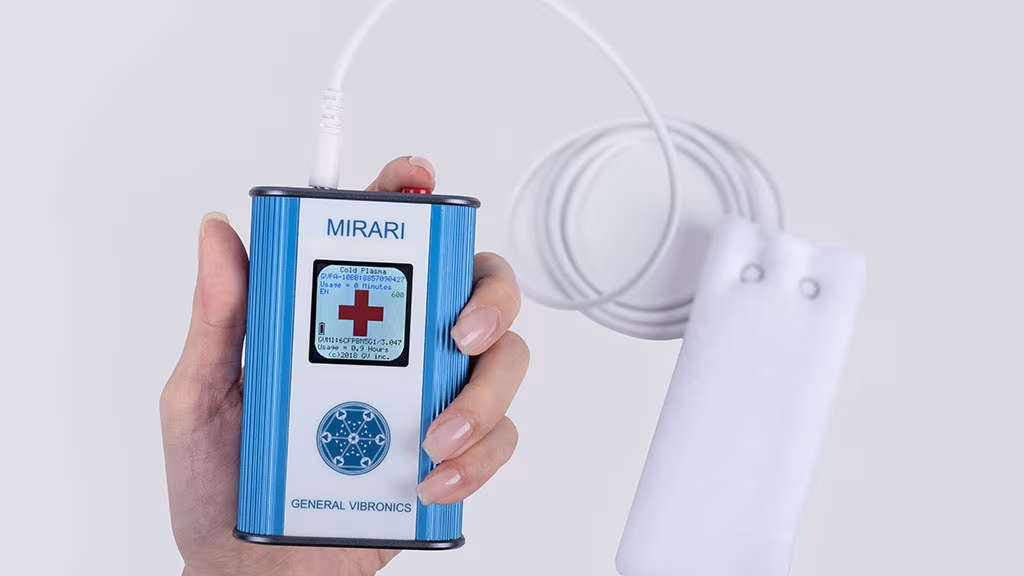
Mirari System Technical Advantages
Key Features:
- Operating frequency: 80 kHz monopolar radiofrequency
- Adjustable power output: 2-4 watts
- Automatic temperature monitoring with 43°C safety limit
- Portable handheld design for clinical versatility
- FDA-cleared for medical use with proven safety and efficacy
The device incorporates advanced safety features, including automatic shutoff mechanisms and precise energy delivery controls, making it particularly suitable for sensitive patient populations and diverse clinical settings[13].
Treatment Comparison: Speed and Efficiency
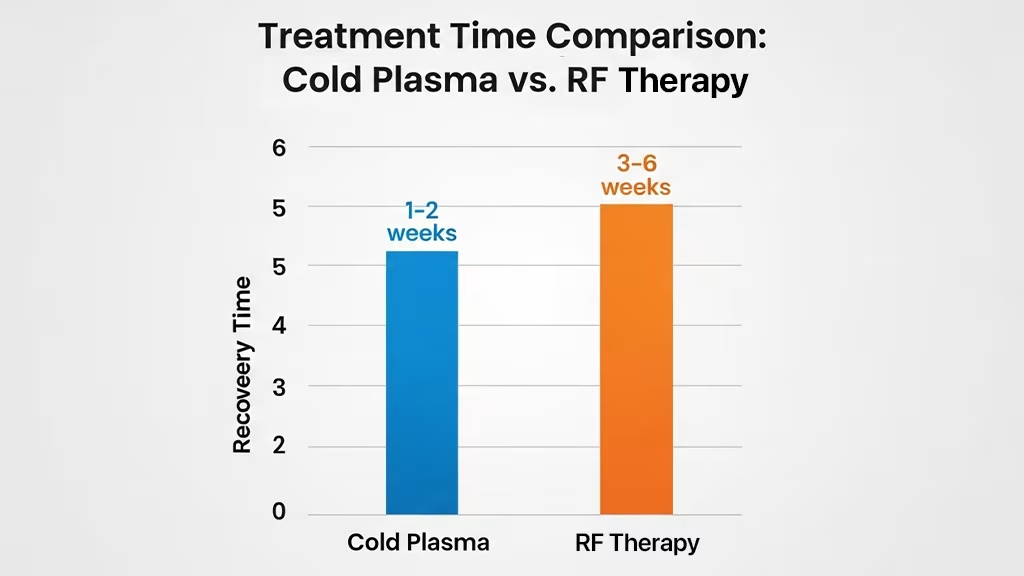
| Treatment Aspect | Cold Plasma | Radiofrequency |
|---|---|---|
| Session Duration | 5-15 minutes | 20-45 minutes |
| Immediate Results | Antimicrobial effects visible within 24 hours | Minimal immediate changes |
| Full Results Timeline | 1-2 weeks for acute conditions | 3-6 weeks with continued improvement |
| Treatment Frequency | Daily applications possible | Weekly to bi-weekly sessions |
| Maintenance Requirements | Minimal ongoing treatment | Regular maintenance sessions |
| Downtime | None to minimal | Mild redness 1-3 days |
| Patient Comfort | Cool, comfortable sensation | Warm to moderately hot feeling |
Cost-Effectiveness and Accessibility
Cold Plasma Economic Considerations
Cold plasma treatments offer several economic advantages:
Treatment Efficiency:
- Shorter session durations reduce clinic time requirements
- Minimal consumables needed beyond device operation
- No anaesthetic or additional medication costs
- Reduced risk of complications minimizes follow-up expenses
Long-term Value:
- Accelerated healing reduces overall treatment duration
- Prevention of secondary infections decreases medical costs
- Improved patient satisfaction enhances clinic reputation
- Versatile device applications maximize equipment utilization
Radiofrequency Financial Factors
RF therapy requires different economic considerations:
Equipment Investment:
- Higher initial device costs due to complex heating systems
- Regular maintenance and calibration requirements
- Consumable electrode tips and conductive gels
- Professional training and certification expenses
Treatment Revenue:
- Established reimbursement pathways for many RF applications
- Premium pricing for cosmetic and aesthetic procedures
- Recurring revenue from maintenance treatments
- Broad patient appeal for anti-aging applications
Which Treatment Should You Choose?
Choose Cold Plasma Therapy When:
Optimal Conditions:
- Acute or chronic wounds requiring antimicrobial action
- Acne-prone or sensitive skin types
- Inflammatory conditions needing gentle intervention
- Patients with compromised healing capacity
- Time-sensitive treatment requirements
Patient Characteristics:
- Seeking immediate antimicrobial effects
- Preferring non-thermal treatment options
- Having metal implants or pacemakers (RF contraindication)
- Requiring frequent treatment sessions
- Sensitive to heat or thermal treatments
Choose Radiofrequency Therapy When:
Ideal Applications:
- Cosmetic skin tightening and anti-aging goals
- Deep tissue conditions requiring thermal stimulation
- Chronic pain management needs
- Collagen production enhancement requirements
- Long-term aesthetic improvements desired
Patient Suitability:
- Good candidates for thermal treatments
- Seeking gradual, long-lasting results
- Able to commit to multiple treatment sessions
- No contraindications to heating treatments
- Primarily aesthetic rather than medical concerns
Frequently Asked Questions
Is cold plasma therapy more effective than radiofrequency for wound healing?
Cold plasma therapy demonstrates superior effectiveness for wound healing compared to radiofrequency treatments due to its direct antimicrobial action and cellular stimulation mechanisms[14]. Clinical studies indicate that cold plasma treatment results in significantly greater wound surface area reduction and accelerated healing times. The technology’s ability to eliminate bacteria while simultaneously promoting cellular regeneration makes it particularly effective for chronic non-healing wounds and infected tissue.
Which treatment has fewer side effects: cold plasma or RF therapy?
Cold plasma therapy typically has fewer and milder side effects compared to radiofrequency treatments[15]. Cold plasma maintains room temperature operation, eliminating risks of thermal burns and tissue damage associated with RF heating. Most cold plasma patients experience only temporary mild redness, while RF treatments can cause more pronounced swelling, redness, and occasional thermal injuries if not properly administered.
Can cold plasma and radiofrequency treatments be used together?
Yes, cold plasma and radiofrequency treatments can be complementary when used in appropriate sequences[16]. Cold plasma can be used first to clean the area and prepare the cells, and then RF therapy can be done to stimulate deeper tissues and help produce collagen. However, treatments should be spaced appropriately and performed under professional guidance to avoid overstimulating tissues and ensure optimal therapeutic outcomes.
How long do results last with each treatment type?
Cold plasma therapy provides immediate antimicrobial effects within 24 hours and sustained wound healing benefits that progress over 1-2 weeks for acute conditions[17]. Radiofrequency treatments offer gradual improvements over 3-6 weeks, with results typically lasting 6-12 months before maintenance sessions are needed. Cold plasma effects are often more immediate but may require ongoing treatment for chronic conditions, while RF provides longer-lasting structural changes.
Which treatment is better for sensitive skin conditions?
Cold plasma therapy is generally superior for sensitive skin conditions due to its non-thermal nature and gentle mechanisms of action[18]. The room temperature operation and absence of thermal heating make cold plasma suitable for compromised skin barriers, inflammatory conditions, and patients with heat sensitivity. RF treatments may exacerbate sensitive skin conditions due to their heating effects and potential for thermal irritation.
Conclusion: Making the Right Treatment Choice
The comparison between cold plasma therapy and radiofrequency treatment reveals two distinct yet valuable approaches to non-invasive medical intervention. Cold plasma excels in antimicrobial applications, wound healing acceleration, and gentle cellular stimulation, making it ideal for acute medical conditions and sensitive patient populations. Its room temperature operation, immediate effects, and excellent safety profile position it as a breakthrough technology for modern healthcare.
Radiofrequency therapy demonstrates superiority in applications requiring deep tissue heating, collagen stimulation, and long-term aesthetic improvements. The technology’s proven track record in cosmetic applications and ability to create lasting structural changes make it valuable for chronic conditions and anti-aging treatments.
The choice between these technologies should be based on specific clinical indications, patient characteristics, and treatment objectives. Healthcare providers must consider factors including condition severity, patient tolerance, desired outcomes, and treatment timeline when selecting the optimal approach.
As medical technology continues advancing, both cold plasma and radiofrequency therapies will likely find expanded applications and improved protocols. The Mirari Cold Plasma System from miraridoctor.com represents the evolution of cold plasma technology, offering healthcare providers an FDA-cleared solution that combines safety, efficacy, and clinical versatility.
Ultimately, the future of non-invasive medical treatment may involve strategic combinations of these technologies, leveraging the unique strengths of each approach to deliver comprehensive patient care and optimal therapeutic outcomes.
References
- Braný, D., Dvorská, D., Halašová, E., \& Škovierová, H. (2020). Cold Atmospheric Plasma: A Powerful Tool for Modern Medicine. International Journal of Molecular Sciences, 21(8), 2932.
- Mirari Doctor. (2025). Cold Plasma: Revolutionary Medical Technology Transforming Healthcare. https://miraridoctor.com/cold-plasma/
- Cleveland Clinic. (2025). Radio Frequency (RF) Skin Tightening: Benefits \& Dangers. https://my.clevelandclinic.org/health/treatments/24683-radio-frequency-rf-skin-tightening
- American Board of Cosmetic Surgery. (2020). So, Are Radiofrequency Treatments Really Safe? https://www.americanboardcosmeticsurgery.org/are-radiofrequency-treatments-really-safe/
- Le Rêveur London. (2025). Cold Plasma vs. Radio Frequency: What’s the Difference \& Which One Is Right for You? https://www.lereveurlondon.com/blogs/news/cold-plasma-vs-radio-frequency-what-s-the-difference-which-one-is-right-for-you
- Medizin Online. (2021). Cold plasma promotes wound healing in diabetic foot ulcers. https://medizinonline.com/en/cold-plasma-promotes-wound-healing-in-diabetic-foot-ulcers/
- Vegas Liposuction. (2025). Radiofrequency Skin Tightening vs. J-Plasma: Which Treatment is Right for You? https://www.vegasliposuction.com/radiofrequency-skin-tightening-vs-j-plasma-which-treatment-is-right-for-you/
- Atlanta Liposuction. (2022). Plasma Skin Tightening vs. Radiofrequency Treatment: Which is Best for You? https://www.atlantaliposuction.com/blog/plasma-skin-tightening-vs-radiofrequency-treatment-which-is-best-for-you/
- Vietnamese Journal of Medicine. (2022). Investigating Adverse Effects of Cold Plasma in Treating Superficial Second and Third Degree Burns. https://tapchiyhocvietnam.vn/index.php/vmj/article/download/5055/4625/9322
- LipoTherapeia. (2025). Radio frequency skin tightening dangers and safety. https://www.lipotherapeia.com/the-peach-factor-blog/what-is-the-safety-rate-of-radiofrequency-treatment-for-skin-tightening-and-cellulite
- American Board of Cosmetic Surgery. (2020). So, Are Radiofrequency Treatments Really Safe? https://www.americanboardcosmeticsurgery.org/are-radiofrequency-treatments-really-safe/
- Mirari Doctor. (2025). Handheld Cold Plasma Technology. https://miraridoctor.com/product/
- FDA. (2024). MIRARI® Cold Plasma System 510(k) Clearance. https://www.accessdata.fda.gov/cdrh_docs/pdf24/K242553.pdf
- Nature PMC. (2020). Cold Atmospheric Plasma: A Powerful Tool for Modern Medicine. https://pmc.ncbi.nlm.nih.gov/articles/PMC7215620/
- Mirari Doctor. (2025). Is Cold Plasma The Same As High Frequency? Key Differences. https://miraridoctor.com/is-cold-plasma-the-same-as-high-frequency/
- LipoSuction NYC. (2025). J Plasma vs. Radiofrequency: Which Skin Tightening Method? https://www.liposuctionnyc.com/blog/j-plasma-vs-radiofrequency-which-skin-tightening-method/
- Phoenix Liposuction. (2025). Plasma Tightening vs. Microneedling RF – Which is More Effective? https://phoenixliposuction.com/blog/plasma-tightening-vs-microneedling-rf-which-is-more-effective/
- Nature. (2012). Cold Radiofrequency Plasma Treatment Modifies Wettability and Germination Speed of Plant Seeds. https://www.nature.com/articles/srep00741
Related articles
Made in USA
